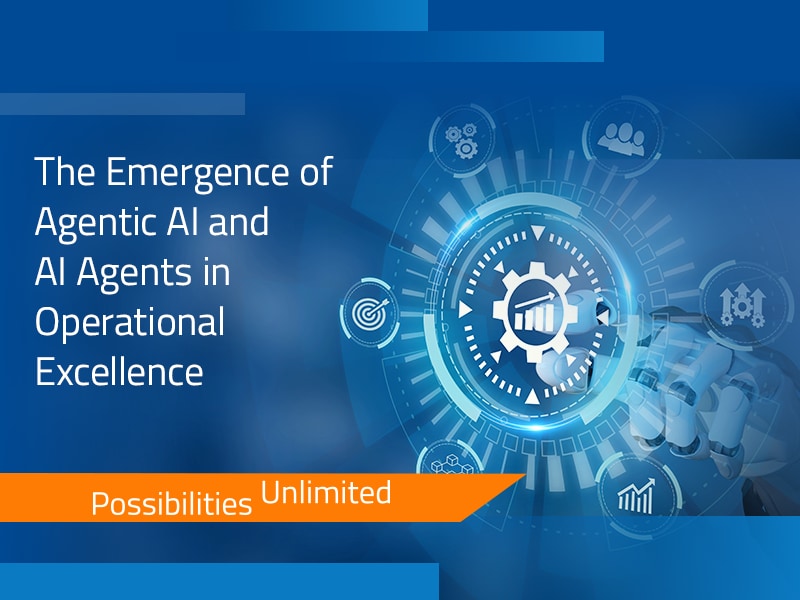Home > Blogs > Beyond Size: Small Language Models, Big Enterprise Impact
Beyond Size: Small Language Models, Big Enterprise Impact

Table of Contents
The Rise of AI Agents
* Podcast is AI Generated Content
As Artificial Intelligence (AI) drives innovation, the language model landscape is transforming. Large Language Models (LLMs) have dominated due to their vast capabilities, but Small Language Models (SLMs) are emerging as strategic alternatives. The global small language model market is projected to grow at a 15.6% CAGR from 2024 to 2030[1], highlighting their rising importance.
These compact models challenge the “bigger is better” paradigm by offering specialized, resource-efficient solutions. While LLMs provide powerful, versatile capabilities, they often demand significant computational resources. SLMs, conversely, deliver targeted performance with lower overhead.
Enterprises now face a critical decision: selecting the most appropriate model type for their specific needs. In response to this evolving landscape, AI platforms that enable the seamless integration of both LLMs and SLMs play a crucial role. By combining these model types, AI platforms offer enterprises the flexibility to choose the most suitable model for each task, optimizing performance and resource efficiency.
Understanding core distinctions: SLMs vs LLMs
To effectively leverage these models, understanding their fundamental differences is crucial.
Domain expertise vs generalization
While LLMs excel as generalists, trained on vast datasets to handle diverse tasks, SLMs take a more specialized approach. They focus on specific domains, using carefully curated datasets to deliver precise, contextually appropriate responses within their areas of expertise. SLMs are designed to be trained directly on domain-specific data, in contrast to LLMs, which rely on widely available public datasets. This distinction becomes particularly crucial in cases where highly specialized knowledge is required, such as enterprise data that exists outside the public domain. While LLMs offer remarkable versatility across a broad range of topics, their effectiveness diminishes in areas where knowledge is scarce or proprietary. For organizations that rely on deep, specialized insights, the generic nature of LLMs often results in responses that lack the precision and context needed for specific applications. This gap between publicly available knowledge and specialized expertise underscores why SLMs, trained on focused datasets, are essential for tasks that demand tailored, specialized AI capabilities.
Architectural considerations
The fundamental difference lies in their design philosophy. LLMs employ complex architectures with billions or trillions of parameters, enabling broad capabilities but demanding substantial computational power. SLMs opt for optimized architectures with fewer parameters, prioritizing efficiency for specific applications while acknowledging limitations in general applicability.
Resource requirements and accessibility
LLMs typically require enterprise-grade infrastructure and significant storage capacity for deployment and operation. For example, in the case of GPT-4, a total of 25,000 NVIDIA A100 GPUs ran simultaneously and continuously for 90-100 days[2]. This massive computational requirement represents a substantial investment in infrastructure.
In contrast, SLMs democratize AI accessibility with their lighter footprint, enabling deployment even in resource-constrained environments.
Performance characteristics
While LLMs offer remarkable versatility across multiple domains, SLMs often match or exceed their performance within specialized areas. The focused nature of SLMs allows for faster processing times and more efficient resource utilization in their target applications.
Economic implications
Implementing LLMs represents a significant investment in both deployment and operational costs, due to their broad capabilities. SLMs offer a cost-effective alternative for enterprises with well-defined use cases, delivering optimal performance without the overhead of maintaining extensive model parameters.
The key benefits of Small Language Models
Computational efficiency
SLMs revolutionize resource utilization by operating with substantially smaller parameter counts. This translates to reduced memory requirements and lower processing power needs, making them more accessible for enterprises of all sizes.
Enhanced performance speed
One of the standout advantages of SLMs is their superior response time. With fewer parameters to process, these models deliver notably faster inference speeds compared to larger models, crucial for real-time applications.
Operational adaptability
The compact nature of SLMs enables greater flexibility in deployment and maintenance, making them particularly valuable for businesses that need to frequently adjust their models to accommodate changing requirements.
Enhanced privacy and security
SLMs offer superior privacy advantages through their ability to run locally on edge devices, ensuring sensitive data remains within organizational boundaries.
Environmental impact
SLMs offer a more sustainable approach to natural language processing by consuming significantly less energy during both training and inference phases, aligning with global sustainability goals.
A hybrid approach: The power of integration
Enterprises that utilize AI platforms with a hybrid approach, leveraging both LLMs and SLMs, can maximize efficiency and performance by combining the strengths of both technologies. At the edge, SLMs handle routine queries with minimal latency, delivering quick responses for immediate needs. For more complex tasks requiring deeper contextual understanding, the system seamlessly escalates to LLMs running in the cloud. This task distribution ensures optimal resource utilization and high-quality outputs across all use cases.
By treating these technologies as complementary rather than competing, AI platforms empower customers to select the most appropriate model for their specific workloads, providing the flexibility and control needed to design tailored, intelligent solutions.
Real-world applications: Where SLMs shine
Small Language Models are making significant impacts across various industries, particularly in sectors where specialized knowledge, quick response times, and data privacy are paramount such as in the Banking and Financial Sector (BFS). Let’s explore this.
Conclusion
In conclusion, adopting Small Language Models (SLMs) alongside Large Language Models (LLMs) offers a more strategic and resource-efficient approach to AI deployments.
AI platforms that seamlessly integrate both models allow enterprises to intelligently distribute tasks based on complexity, reducing the strain on LLMs and optimizing performance. By offloading simpler tasks to SLMs, businesses can save on computational resources while maintaining high-quality outputs for more complex tasks. This hybrid approach not only enhances efficiency but also helps balance performance with cost, ensuring that organizations can scale AI solutions effectively. As AI continues to evolve, leveraging this balance will be key for enterprises looking to maximize their resources while staying competitive.
Elevate your enterprise with AI—at your own terms. With a unified AI platform like EdgeVerve AI Next, you can seamlessly integrate the language model that best fits your needs.



Possibilities Unlimited
Possibilities Unlimited
Inspiring enterprises with the power of digital platforms
More blogs from EdgeVerve →